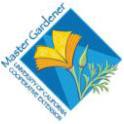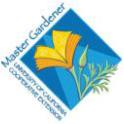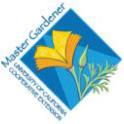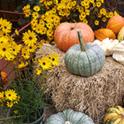Spring 2024
“It is spring again. The earth is like a child that knows poems by heart. ”
— Rainer Maria Rilke
With our Great Tomato Plant Sale (GTPS) being just a few days away, we are all getting very excited, and we hope that you are too! This year you will have plenty of opportunity to come and select your favorite baby plants at one of the 3 locations. Do visit our website ahead of time for more information on locations, plant descriptions, shopping lists, and so much more.
This spring issue is loaded with information on growing vegetables, whether in-ground or in containers, including important information on attracting pollinators to your garden and “Using Nature to Control Pests” so that other methods, such as chemicals, can be avoided.
We continue to address “Living in Wildfire Country” with a simple strategy for you to try, and for those new to firescaping or who’d like a refresher course, Part 1 of “Landscaping for Fire Safety” will help you reduce the vulnerability of your home and property to wildfire.
Thinking about joining our team? “How to become a UC Master Gardener Volunteer of Contra Costa County” can help you make that decision.
Enjoy reading and happy gardening!
Hedwig Van Den Broeck and Robin Mitchell, editors
-

The Great Tomato Plant Sale Starts with a Single Seed!
by Liz Rottger
Well, actually, with more than 35,000 seeds! That’s how many plants the UC Master Gardeners of Contra Costa are propagating for their Great Tomato Plant Sale that will be held in 3 county areas (Walnut Creek, Antioch, and Richmond) this year. We will propagate 70+ varieties of hybrid and heirloom tomatoes, 35+ varieties of peppers, and 60+ varieties of other types of summer veggies, including eggplants, zucchini, pumpkins, winter squash, beans, and cucumbers. We offer several varieties rarely found in Contra Costa, all selected because they do well in our county’s many micro-climates. Detailed descriptions can be found on our website.
-

How to Choose the Best Tomato for your Garden
produced by our UCMGCC Communications Team
You are in for a real treat! Our Communications Team has produced a few short videos on choosing and successfully growing tomatoes in Contra Costa County.
Watch the video on Heirloom vs. Hybrid Tomatoes
Watch the video on Determinate vs. Indeterminate TomatoesIn case growing tomatoes is not your thing, no problem; there are plenty of other tasks you can do in the garden during this beautiful spring time: Garden Tasks this Season.
Interested in more of our recorded sessions? Click here to connect to our YouTube channel!
-
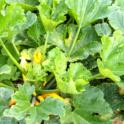
Growing Cucumbers and Squash in Containers for Small Spaces Gardening
by David George
One of the most popular veggie families besides tomatoes at our annual Great Tomato Plant Sale are the Cucurbits, which include cucumbers, squash, and pumpkins. Growing cucurbits, whether in-ground or in a container, is a breeze and very rewarding.
-
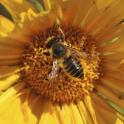
Our Veggies need our Pollinators
by Laurinda Ochoa
It’s about that time of year! We purchased healthy tomato plants and other vegetables at the UC Master Gardeners of Contra Costa County Great Tomato Plant Sale. We waited until the weather and the soil temperature were just right, and found the perfect planting location with the recommended hours of sunlight. We even amended the soil, when needed, and aren’t planting the tomatoes in the same soil they grew in last year.
We’ve been carefully watering, and now we have sturdy plants with healthy new growth and fully formed flowers.
Yay!!! The plants are beautiful! But where is the fruit?
-
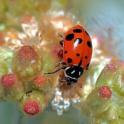
Using Nature to Control Pests
by Robin Mitchell
All creatures have a role to perform in the delicate dance of nature.
Spring is such a wonderful time of the year, and it is a good time to look for beneficial insects as the plants and flowers begin to emerge and bloom. These beneficial insects can help control unwanted pest insects, so that other methods, such as chemicals, are not needed.
-

Home Landscaping for Fire Safety
Part 1 of an ongoing series by Pam Schroeder
Living with the threat of wildfire is, unfortunately, a fact of life for Californians. While we cannot control wildfire, we can help minimize its destruction by practicing fire safe strategies which reduce the vulnerability of your home and property to wildfire.
We plan to continue covering this topic in future issues with more detailed information on this very important landscaping strategy. Why?... Because it is a course of action that allows you to proactively make a positive difference in the event of a wildfire.
Part 1 is for our readers new to this subject or who would like a little refresher on creating a fire-resistant property. So, let's first dig into the Elements of Landscaping for Fire Safety.
-
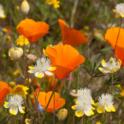
A Simple Strategy for a Firewise Garden
Living in Wildfire Country by Marilyn Saarni
Sometimes figuring out how to create—and manage!—a firewise garden is overwhelming. Here is a simple strategy for you to try. Use spring ephemerals.
What are ephemerals? Plants that sprout leaves and flowers in the California coastal winter and spring, and then fade away by the time the hot and windy weather arrives and wildfire risk increases.
-
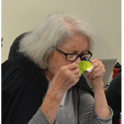
How to Become a UC Master Gardener of Contra Costa County Volunteer!
by Bonnie Dwyer
Here are some experiences shared by our extraordinary group of UC Master Gardeners of Contra Costa County: Making NEW friends, Meeting INTERESTING people, Hearing about FASCINATING topics, Learning REWARDING lessons, Having DELIGHTFUL encounters, dealing with CHALLENGING questions, Giving FULFILLING service!
-
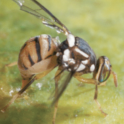
Invasive Oriental Fruit Fly Quarantine in Our Area
by Paige Shewmaker
On behalf of the California Department of Food and Agriculture, I am providing you with some informational resources for residents regarding an invasive fruit fly quarantine in your area.
The Oriental fruit fly has been found in parts of Contra Costa County, including the Brentwood area. This invasive pest infests and can ruin over 300 types of crops, ultimately making them unfit for human consumption. A quarantine has been established in the area to help eliminate the pest.
Winter 2024
-
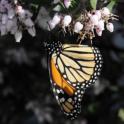
Winter Blooms for Garden Pollinators
by Laurinda Ochoa
During our cold and wet winter season, many native birds and pollinators rely on plants to provide both food and shelter. Some easy-to-grow winter-blooming native plants that provide pollen, nectar, and shelter are Manzanita, Ceanothus, Toyon, and Silktassel. There are also California wildflowers that bloom in the late winter and early spring when they have become established in the fall and early winter months.
One of the bright spots during winter might be watching our gardens provide the blooms and shelter needed by our native pollinators.
-
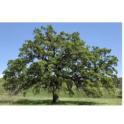
Gardening Under Oaks
by David George
Do you have one or more native oak trees in your yard or would like to plant one? Our local oaks are magnificent and important trees to the Contra Costa ecosystem. They deserve to be treated with respect and care. What are the best practices for gardening under and around native oaks? This article will guide you through the selection process of plants that are beautiful, waterwise, healthy, and complimentary to your oaks.
Oaks are taxonomically called "Quercus," which is Latin for “Fine Tree.". They are called a “keystone” species because they support entire ecosystems. If oaks were to disappear from our region, birds, small mammals, insects, and other creatures that rely upon them would soon disappear as well.
-
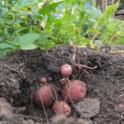
Potatoes are a Perfect Winter Crop!
by Robin Mitchell
Potatoes are a fun and easy crop to grow at home, with relatively few pests and diseases. Of course, they are inexpensive to buy in the grocery store, but growing them at home allows you to try varieties that you might not get in the store, and you can eat them fresh from the ground.
In the relatively mild climate of Contra Costa County, and in particular on the San Francisco Bay side of the county, it is possible to grow potatoes almost all year. Know that if you grow potatoes, you will likely never harvest all the tiny potatoes, so you will potentially have potatoes in your garden "forever," as those will continue to grow and produce more potatoes!
-
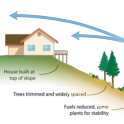
Living in Wildfire Country: Winter Calm and Winter Tasks
By Marilyn Saarni
When winter rains arrive our anxiety about wildfire risk is soothed. Finally, we can leave the leaves on the ground to protect and nurture the soil. Here are a few tasks that are easiest done during the fall or winter to reduce the demanding maintenance work a firewise garden can require as late spring and wildfire season approaches.
And here are some more resources on Winter gardening tasks.
-
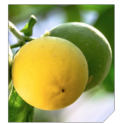
Citrus in the Winter
by Robyn Barker
Once the railroads connected the frozen northern plains of the United States to the southern states in the mid-1800s, oranges became a special treat for snowbound prairie dwellers. Whether pierced by cloves to make scented pomanders or tucked into the toe of a Christmas stocking, the brightly colored fruit brought sunshine and sweetness to the darkest days of the year.
Mandarin oranges are still a much-anticipated end-of-the-year treat. Citrus can take a long time to ripen, up to 8–10 months, so the reliable December bounty, whether from the grocery store or from the backyards of those of us lucky to have these trees, is a welcome joy. If you grow citrus, pick all your fruit once it has fully ripened. Leaving fruit on the tree won’t improve its quality and may impact the frost tolerance of the tree.
-

What is Helpful for a Gardener to Know About Light?
by Monika Witte
What impact does the solar radiation that lands on the earth’s surface have on plants? First, we all know that plants produce their own food using photosynthesis. Also, the warming soil in spring, encouraging seeds to germinate and plants to grow, results from the increasing amount of radiation occurring in the spring. The cooling soil and reduced light in the fall signal plants to enter dormancy.
What is light, from the perspective of a gardener?
Solar radiation includes a spectrum ranging from very high energy gamma and x-rays down to low energy radio waves. The atmosphere reflects, absorbs, or scatters most of this incoming radiation. In particular, ozone absorbs most of the harmful ultraviolet (UV) radiation.
-
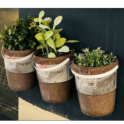
Small Indoor Winter Pleasures
by Cynthia Engers
We all enjoy herbs added to our foods, and if they’re not available in your winter garden, consider getting a head start on spring by growing them indoors on a windowsill.
You can grow them from cuttings, buy small plants, or start them from seed, which is the most budget-friendly option. You can use them for cooking once they reach a few inches in height. Popular choices for indoor herbs include chives, basil, lavender, parsley, mint, rosemary, oregano, tarragon, sage, and thyme. Coriander and mint are good options as well. Basil, parsley, and cilantro generally grow well from seed.
-
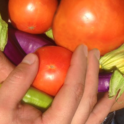
Small Spaces: Community Gardens
by David George
The Small Spaces Gardening column aims to provide tips and techniques for successfully growing flowers, fruits, and vegetables in a limited amount of space.
However, what if you would like to grow your own produce but have no space at all, such as a patio home, apartment, or condominium? We advise you to check out a nearby Contra Costa County community garden. community garden.
Fall 2023
-
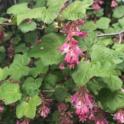
Plant Native Shrubs Now for Winter and Spring Bloom
by Laurinda Ochoa
Fall is the ideal time to plant California natives and other Mediterranean plants that grow with our winter rains and bloom in late winter and spring. Planting now gives the roots of these plants time to grow into the soil and become established before the high temperatures and dry climate of our summers.
Shrubs are multi-branched plants that are smaller than trees and larger than bushes. Shrubs are long-lived perennial woody plants that can be either evergreen or deciduous (lose their leaves). Although not as long-lived as multi-century-old trees, most native shrubs can live for decades both in nature and in our gardens, compared to commercial, hybridized, and non-native shrubs, which generally need to be replaced more frequently than native shrubs.
-
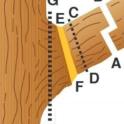
Pruning to Control Growth
by Anne Sutherland
Pruning during dormancy invigorates trees. Pruning when a tree is leafed out in summer and fall will reduce the next season’s growth and is the best way to reduce its size. Removing leaves decreases the energy the tree receives from the sun, energy that the tree uses to manufacture fruit and for its own nourishment. Therefore, summer pruning is best done after fruit harvest or after flowering if it’s a landscape tree or shrub. Summer pruning refines the structure you build during dormancy.
-
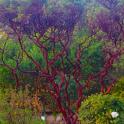
Aesthetic Pruning: Taking pruning a step further
by Hedwig Van Den Broeck
There is something magical about strolling through nature, where fauna and flora thrive without human interference. Our California natives - whether groundcovers, shrubs, or trees - just appear to be having a great time doing what they do best: growing effortlessly.
Even though I’ve always been more interested in natural gardening, it wasn’t until a beautiful young Madrone tree, Arbutus menziesii, in my garden was hit by a huge Oak limb that fell and ‘topped’ the Madrone that I became interested in aesthetic pruning. Not only was the damaged tree a hideous sight, but it also seemed unlikely that this beautiful tree would recuperate. I was, however, determined to find a solution.
-
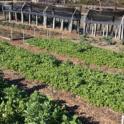
A Season in Review
by Janet Miller
The end of the main growing season is approaching, and what a season it has been, both at the Walnut Creek demonstrating garden, ‘Our Garden’ ) and in our own gardens. In comparison with other winters in our part of the country, this winter was particularly long, wet, and, cold. Here in the Bay Area, we saw record-breaking amounts of rainfall, heavy winds, overcast skies, and unusually cold weather that lasted at least a month longer than usual. All of which spelled trouble for farmers and backyard growers alike. The cold spell meant the soil didn’t warm as quickly as it should have and overcast skies minimized photosynthesis, keeping seedlings small and, in some cases, permanently stunted.
-
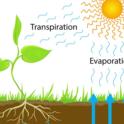
Try These Strategies to Use Less and Store More Water
by Lori Palmquist
It’s September, and the leaves are turning color, detaching, and floating to the Earth to form a mantle that feeds and shelters the soil and the resident soil organisms.
It’s Best to Ramp Back Watering August-December
Nature is signaling to us that it’s time to ramp back on our irrigation schedules. Although we may be experiencing 100 degree days, the amount of water the plants require is diminishing day by day. As we edge further away from the summer solstice and creep toward the winter one, the days are shorter and shorter. So, how does this relate to ramping back on our schedules?
-
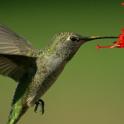
Winter Gardens for the Birds!
by Lorraine Frey
Believe it or not, summer will soon be coming to an end. It’s therefore time to think about the fall garden and the birds we want to see and protect through the winter First, we need to re-think fall "Cleanup".
In the garden, tolerance and aesthetic preferences vary from person to person. So, if you aren't quite ready to go 100% “au naturel” this fall, then start with just a few of the following ecosystem-boosting recommendations—you'll be surprised just how beautiful a "messy" lawn and garden can be.
-
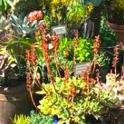
Small Spaces Gardening: Growing Succulents in Containers
by David George
Succulents are popular patio container or indoor plants in Contra Costa County. Many are easy to grow in shady or dry conditions, which often challenge other container plants. Over 10,000 plant species in the world are considered succulents, and thrive in diverse climates such as humid coastal zones, hot deserts, and cold Alpine regions. They comprise about 3% of the world’s flowering plants and boast unusual leaf shapes and colors. And they are lovely when grouped together as accents on your patio or deck. Are you ready to grow your own succulent container garden? Let’s get started!
-
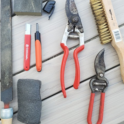
Be Kind to Your Tools to Be Kind to Your Plants
by Cynthia Engers
It’s easy to take our trusted garden tools for granted, but sometimes they, too, need care and attention. And that care entails cleaning, sharpening, and disinfecting.
Ideally, cleaning—removing dirt and wiping or scrubbing off plant residue—is a regular task during the planting and pruning season. Water and/or household cleaners, along with an abrasive helper, such as steel wool or a wire brush, should do the trick.
Summer 2023
-
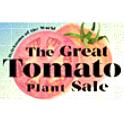
The annual 2023 Great Tomato Plant Sale (GTPS) was very successful!
THANKS TO YOU!
Since Covid, this year's GTPS was our first 'in-person-only' event and extending it to three days worked out well. Many shoppers opted to avoid the long lines of opening day and made the decision to shop on Sunday or Monday.Thank you, Contra Costa County residents.
We are very grateful for your support!
-
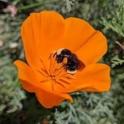
California Natives: A Smart Choice
by Kate Verhoef
UC Master Gardener volunteers often provide advice on reducing water use in home gardens. You can do this by selecting drought-resistant California native plants. Drought tolerance is not the only positive feature of many California natives. Here are more reasons to choose California native plants, and a list of recommended plants for a more drought-tolerant, fire-resistant landscape.
-
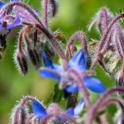
Remember the Pollinators
by Cynthia Engers
The third week of June is National Pollinator Week, an international celebration of the importance and vulnerability of pollinators. It was designated as such by the U.S. Senate in 2007 to raise awareness of the declining population of pollinators. Following the global focus on this topic, we are providing links to some of our in-depth coverage from past issues, as well as looking at the opportunity to support pollinators from a new angle: Edibles.
-
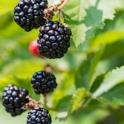
Small Spaces: Growing Berries in Containers
by David George
Berries, such as the plump, juicy ‘olallie’ blackberries, sweet red raspberries, or delicious blueberries, are among the most well-liked and nutritious container-grown foods. The majority of berry cultivars ripen between late April and early July, although some also yield a second, lesser crop on young canes in the fall. Because of their high concentration of antioxidants, necessary vitamins, fiber, and trace minerals, berries have been dubbed a "superfood".
-
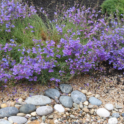
Climate Change: Improve your garden’s ability to handle too much rain!
by Robin Mitchell
This past winter, California had record precipitation in the form of both rain (in the San Francisco Bay Area, as well as other places) and snow in the mountains. And the previous years we experienced drought.
Many homeowners experienced flooding and erosion in their gardens, which were not designed for such large amounts of rain. Is it possible to make your garden more resilient when the weather delivers that much water?
There are a few ways to improve your garden’s ability to handle too much rain.
-
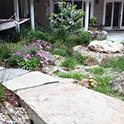
Climate Change: Too little water in fire prone California
by Hedwig Van Den Broeck
For many years it was the severe drought, dwindling reservoirs, and devastating wildfires that captured the headlines; this winter it was the atmospheric rivers causing disaster. Historically, both drought and flooding have contributed to California's water issues. Unfortunately, due to climate change, these swings between wet and dry have grown more extreme.
Here are some ideas to help you create and maintain a drought-tolerant garden that will protect you better again wildfires and at the same time beautify your landscape and property as well.
-
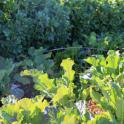
Family Harvest Farm: New East County Demonstration Garden Coming Soon!
by David George
A new East Contra Costa County Master Gardener demonstration garden is in the works! Funding approval was gained in February and work is now in progress for the garden on a portion of the Family Harvest Farm (FHF) grounds on Power Avenue in Pittsburg. The area is owned by PG&E as an easement for overhead power distribution lines, but 3.5 acres were leased from PG&E in 2016 by the John Muir Land Trust (JMLT) to develop an urban garden. The trust hired 3 staff members to manage the FHF development, to recruit and train apprentices, and to coordinate with the UC Master Gardener Program of Contra Costa County (UCMGCCC) for their new 2,000 square foot demonstration garden.
-
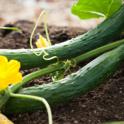
Summer Tasks in the Garden
Let's not forget to take care of our gardens this summer in addition to all the fun activities we have planned, especially when temperatures are rising and our priceless landscape begins to get thirsty.
Spring 2023
-
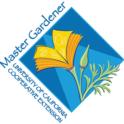
-
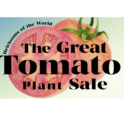
The Annual Great Tomato Plant Sale
This year marks the 13th anniversary of the Contra Costa Master Gardeners Great Tomato Plant Sale and we’re very pleased to announce that we’re back to an in-person sale at two locations! With such a vast assortment of tomatoes, peppers, eggplants, squash and more, we’re sure you’ll have plenty of great choices for your summer gardens.
Details at a glance:
- Our Garden: April 1st, 2nd and 3rd from 10:00am to 3:00pm each day.
Located at N. Wiget and Shadelands Dr. in Walnut Creek - Richmond Civic Center Library: April 29th from 10:00am to 3:00pm.
Located at 325 Civic Center Plaza, Richmond - All plants are $4. CASH OR CHECK ONLY, checks preferred.
Don’t forget to bring boxes to carry your new plants home!
Please visit our website for complete details, including plant descriptions, shopping lists and helpful articles.
We hope to see you there!
- Our Garden: April 1st, 2nd and 3rd from 10:00am to 3:00pm each day.
-
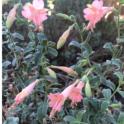
Native Plant Gardening in the Spring
by Laurinda Ochoa
For those of us who didn’t get around to casting those wildflower seeds or starting seedlings in pots, can we plant natives during the spring months?
Yes! Although March and April are too late to start a spring-blooming native wildflower garden, there is still time to plant summer and fall blooming California native perennials. Here are three native plants that bring color and pollinators to our yards during the summer and fall – penstemons, asters, and salvias.
-

Mulch: It's Got You Covered
by Anne Sutherland
It’s hard not to get excited about mulch. Mulch is one of the best things you can do for your plants and you can get it for free. Free sources include your own yard waste such as grass clippings, or wood chips from a reliable tree service. UC Master Gardeners prefer organic mulches because they are part of the carbon cycle and have benefits that rock, weed barriers, and plastic lack.
-
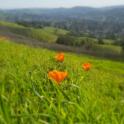
Keeping your Hill in Place: Erosion control on hillsides
by Hedwig Van den Broeck
Many of our California hillsides have become unstable due to previous atmospheric river events, and some have even started to slide. Erosion is harmful because it puts local bodies of water and storm water management systems in danger, as well as your property and that of your neighbors.
To prevent soil erosion and the loss of priceless topsoil, it is crucial to control erosion on hillsides. Many of us hurried to get sandbags or other temporary solutions this winter. It is preferable however to implement longer-term fixes that can maintain the stability of your hillside.
-
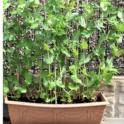
Patio Techniques for Peas and Beans
by David George
Many patio gardeners have successfully grown tomatoes in containers. But have you tried peas or green beans? Peas and beans can also be quite productive and fun to grow in limited spaces. And if you are blessed with a sunny location, the ripe pickings will be sweet and packed with more nutrition than supermarket produce.
When should you plant seedlings? Right now (April-May) are the best months for summer pea and bean seedling planting. Ripe veggies can be harvested from your plants as early as June and can last through August, depending on the variety.
-
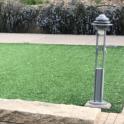
Synthetic Turf: a UC Master Gardeners Perspective
by Laurinda Ochoa
At our Ask A Master Gardener, UC Master Gardeners regularly hear questions about synthetic turf lawns. With costs for water, fertilizers and garden maintenance rising, many people wonder if it is a good idea to take out their lawns and put in an artificial turf product. From a UC Master Gardeners perspective, the answer is no. Synthetic turf is not a good substitute for our lawns.
-
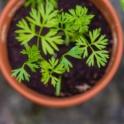
Spring Tasks: Is your Garden ready for Spring?
Frost damage! Numerous atmospheric rivers! Weeds trying to take over! Our local weather this winter might have set us back a bit. The UC Master Gardener Program of Contra Costa County as well as the Statewide blog can help you catch up.
Winter 2023
-
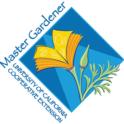
Editorial Notes
“The Earth does not belong to us; we belong to the Earth.”
— Chief SeattleWhat is certain however is that each and every effort in fighting climate change counts and the UC Master Gardeners of Contra Costa County are here to help you achieve positive results using more sustainable garden practices.
-
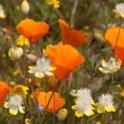
Now Is the Time to Plant Natives in Your Garden!
With the start of the rains in the Bay Area (thank goodness), this is a good time to incorporate native plants into your garden.
There are so many possibilities between California native annuals and perennials. Here are some ideas about how to get started!
-

The Benefits of Urban Trees and Why the Best Time to Plant One is Today
Don’t you feel like something is missing when you stroll or drive through a city street without trees? And when you do take a tree-lined street, doesn’t your journey seem much shorter and more enjoyable? When trees are around, we are much more likely to go outside. And even if we are unable to go outside, just looking out onto a green, tree-lined street makes us feel good. It makes us happier and healthier.
-

Smart Controllers for the Win! Choose Which One is Best for You
Smart irrigation controllers are the intelligent choice for our gardens. They automatically adjust the irrigation schedule daily, based on changes in the weather. They’re like a thermostat for your landscape. And how great is it that our water providers are literally paying us to use them?
-
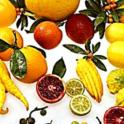
Growing Citrus in Pots
Are you shocked at the prices of oranges and lemons at the grocery store? Do you know that you can grow your own oranges and lemons in a patio container for just the cost of water, fertilizer, and time? Citrus trees are an attractive and rewarding addition to any patio garden. Most dwarf varieties grow well in containers and produce great quality fruit in winter months when other fruit sources are dormant. And the brightly colored orbs hang like holiday ornaments on a leafy green backdrop.
-

Are You Safe in your Garden?
Safe practices in the garden have always been a key focus of the UC Master Gardener Program. Preventing serious injuries to our volunteers involves many hours of training, tool sharpening, and using equipment properly.
No one in our program knows more about safety issues than experienced Master Gardener, Joie Spinelli.
-
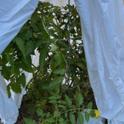
Winter Tasks. Time to Bundle Up!
There are plenty of winter tasks This Season in the Garden and our Helpdesk regularly writes very timely blog posts which you can also access via our website.
Just in! from UCANR Statewide: How to Care for Flood and Water-Damaged Plants.
While sheltering from severe weather, check out our YouTube Channel ! It is a treasure trove of 36 great presentations we’ve given over the past couple of years, just waiting for you to enjoy!
Fall 2022
-
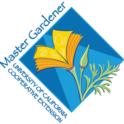
Editorial Notes
"Life starts all over again when it gets crisp in the fall"
— F. Scott FitzgeraldIn anticipation of the arrival of much needed winter rains, we dedicate this issue to a beautiful season where nature gracefully winds down and gives back bountiful: what we lose in flowers and leaves, we gain in fruits and color.
Fall is a great time to Plant!
-
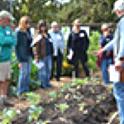
News and Events
There is still time to come and listen to some very interesting in-person Garden Talks at our demonstration gardens or enjoy a few live webinars.
-
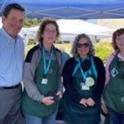
Ask a Master Gardener Tables Are Back!
Although UC Ask a Master Gardener tables reopened in limited numbers in 2021, all Farmers Markets that we normally attend in Contra Costa reopened this past summer.
by David George
-
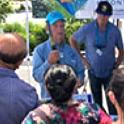
List of 2022 UC AAMG tables at local Farmers Markets
Visit a UC Ask a Master Gardener farmers market table near you! Generally held through October, weather permitting.
By Stephen Guglielmana
-
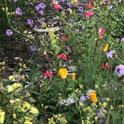
Fall is a Great Time to Plant
Fall is a Great Time to Plant Natives and Drought Tolerant Plants
by Laurinda Ochoa
-
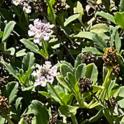
Drought Tolerant Native Groundcovers
Planning to remove or reduce your lawn? – Try these drought-tolerant native groundcovers.
By Kate Verhoef and Laurinda Ochoa
-
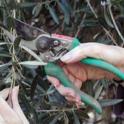
-
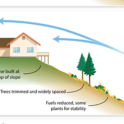
-

Sustainable Gardening Practices: Using Recycled Water
Sustainable Gardening Practices:
Using Recycled Water — What You Should Know
By Jimm Farr
-
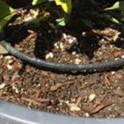
Container Gardening: Water saving Techniques
Container gardening in small spaces, such as a patio near your kitchen, is fun and can be very productive.
by David George and Terry Lippert
-
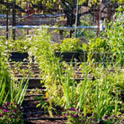
Fall School Gardens Newsletter
Schools have reopened from their summer breaks and school activities are already in full swing. The school gardens are drawing their fair bit of attention from the school communities.
by Soubarna Mishra
Summer 2022
-
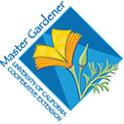
-
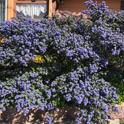
Drier Doesn’t Have to Be Dire
As our magnificent hills and open spaces turn from green to golden brown, the grasses seem to be waving goodbye to spring. And it feels like we need to fortify ourselves to face the coming summer. Ever-present drought and the threat of wildfire are calling us to action as spring slips away.
by Lori D. Palmquist
-
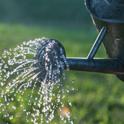
Add a Flowmeter to Monitor your Water Usage
An Efficient Step to Monitor your Water Usage
by Cynthia Engers
-

Living with Wildfire - Firescaping Plant Lists
by Marilyn Saarni
Firewise Plant Lists are being removed from websites by many Firesafe Councils and Wildfire Preparedness agencies. This movement has occurred because these lists were often based on anecdotal evidence, “just a feeling," and ...
-
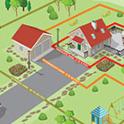
Summer Tasks and Wildfire Preparedness
Here is your Summer Checklist for your garden and landscape, including how to monitor pests and diseases (IPM).
Our California landscape is prone to wildfires, especially during the summer. Here are some great resources to help you prepare your home and landscape against devastating wildfires.
-

Ask a Master Gardener
Have you been to a farmers' market lately? You will find an ‘Ask a Master Gardener (AAMG)’ table staffed with UC Master Gardener volunteers at many Contra Costa County farmers' market locations. Most markets are held on Saturday or Sunday.
by Kathy Gage
-

Gophers, Moles, and Voles
Interview with “Mr. Gopher” Bob Archer, including a video clip demonstration of the 'Gopher Hawk' trap.
by David George
-
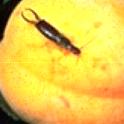
Earwigs - Good Bug? Bad Bug? Which is it?
The European earwig, Forficula auricularia, known by children everywhere as a “pincher bug”, has become the most abundant earwig in California since it was first seen here in 1923.
by Janice Winsby
-
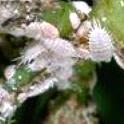
Container Gardening Pests
Container gardens often have fewer pest issues than in-ground plants. However, just about any insect pest that is a problem for plants grown in-ground can also attack container grown plants!
by David George.
-

Integrated Pest Management (IPM)
New Entry-Level Pest Pro Certification Provides Better Public Safety. An interview with Dr. Andrew Sutherland, the SF Bay Area Urban Integrated Pest Management (IPM) Advisor.
by David George
-
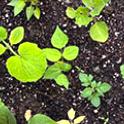
-

News and Events
We have an exciting summer ahead of us with upcoming webinars, Growing Gardeners classes and In-person Garden Talks at our demonstration gardens in Walnut Creek and Rivertown.
Spring 2022
-
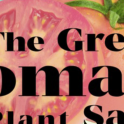
-
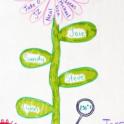
Thank You Note From Mission to Mars Class
Thank you so much for sharing your knowledge yesterday! Your presentations, answers to questions, and informal discussions all had a big impact on our group.
-

-
-
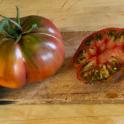
Top 10 Hot Tomato Picks
The UC Master Gardeners of Contra Costa County will hold their 11th annual Great Tomato Plant Sale, opening for online orders only on April 2nd at noon...
-
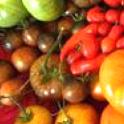
The Best Container Tomatoes for You
With the Great Tomato Plant Sale around the corner, we should review the best tomato varieties for your container garden...
-
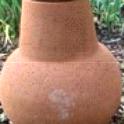
Save Water by Irrigating with Ancient Ollas
Along with everyone else in California these past few years, I am looking for ways to use less water in my garden...
-
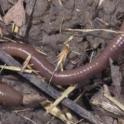
Earthworms
Earthworms are invisible, hardworking, free garden helpers who eat broken bits of leaves, grass, food scraps and things that plants can’t use. They turn them into nutrient-rich, finer organic matter, called worm castings.
-
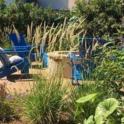
Mind Your Water in the Garden
The water districts could be asking us to conserve even more this year. The whole state relies on a steady supply of snow and rain the first three months of the year. But very little of this liquid refreshment has fallen thus far. Since drought seems to have settled in, the onus is on us to bring on our best dry game.
Winter 2021-22
-
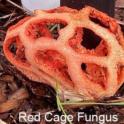
-

Lichens, Mosses, and Algae
Winter rains and cool weather wake up the lichens, mosses and algae growing in our gardens and yards ...
-
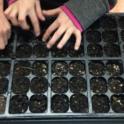
Starting Seeds Indoors is Frugal, Fun and Fascinating
Another new year is upon us, and so we turn our thoughts to planning our summer garden ...
-
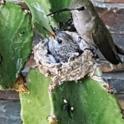
Creating a Wildlife Habitat
In his book Bringing Nature Home, entomologist Douglas Tallamy gives notice: ‘It has become increasingly clear that much of our wildlife will not be able to survive unless food, shelter and nest sites can be found in suburban habitats.’
-
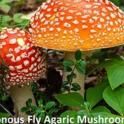
Secret Life of Mushrooms
Have you ever wondered how the ground somehow magically absorbs everything on its surface? Fallen leaves, dead bugs, animals and trees ...
-
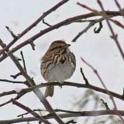
Winter Garden Tasks
Let's celebrate the much-wished-for winter rains we received so far and endure the cold with an extra jacket and some solid winter boots...
-
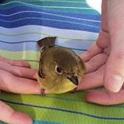
NEWSLETTER ARCHIVE

Coming soon! Search function for archive of News to Grow By articles










